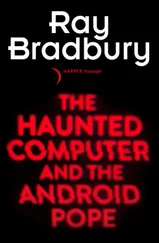During the time they were figuring out a way to link the computer and the typesetter, Bill and Dan became friends Then, in 1981, Bill was visited by some serious-looking strangers in dark-blue business suits. They were from IBM, and although they couldn’t say anything definite or specific they indicated that they might possibly be interested in talking to Bill about something they could only be vague about at present. So Bill, smelling the deal of a lifetime, “put on his sales hat” and gave these somber visitors a heavy-duty pitch about what a significant company IUS was going to be someday. When they came back a week later and told Bill it was time to set up a meeting, he went to Dan for advice.
Bill told Dan that because he was getting involved in what looked like some kind of huge business deal, he needed a lawyer, adding: “I don’t like lawyers in the first place and don’t know one I could trust.” Bill recalls that Dan grinned and said: “How much do you dislike lawyers?” It turned out that Dan himself had a law degree and had passed the bar, even though he didn’t practice. Nevertheless, he agreed to represent Bill in the IBM negotiations, and a week later they were told to show up at a room in a hotel on the Berkeley Marina. The room had been rented under a phony name—only the first of a series of strict military-like security measures that IBM insisted upon. In the room were nine heavyweight negotiators in dark-blue suits, white shirts, and dark-blue ties. Facing them were the twenty-four-year-old software publisher and his twenty-six-year-old counsel.
Dan still remembers the way it started: “I had written up a little nondisclosure agreement and passed it around.” This was a pretty audacious gambit—a nondisclosure agreement is the legal document one makes people sign if one plans to show them a secret prototype or reveal proprietary information. The agreement threatens them with all kinds of penalties if they leak what is revealed to them. Naturally, the IBM representatives did not even glance at Dan’s little agreement. Instead, IBM’s attorney presented Bill and Dan with a considerably thicker document which said, in effect, that everything IBM told IUS was a secret but that anything IUS told IBM was not. Period. Of course, the boys signed.
The IBM representatives began discussing a secret project and referred to it by using a code name. This is a common Practice in the hardware side of the computer industry whenever very important new technologies are concerned. A different code name is used with every group of negotiators, and that way the source of any leaks can be traced. In any case, IBM's secret project was a desktop computer that, when announced, would revolutionize the personal computer industry. It was the IBM PC. In the meantime, IBM wanted to license or purchase an IBM-compatible version of EasyWriter so that PC customers would have a word-processing program right away.
A proposition like that is an entrepreneur’s dream, of course. IBM doesn’t do things on a small scale, financially or otherwise. Even a considerably discounted royalty can add up to a lot of bucks when the number of projected sales is in the hundreds of thousands. And for the initial period at least, there wouldn’t be any competition from other software publishers—IBM was offering IUS an exclusive and critically important six-months-to-one year jump on the prospective market for PC software.
They went back and forth on the royalty negotiations. IBM wanted to put a cap on royalties and specify a maximum figure that IUS would be paid. But Bill and Dan didn’t want to make a concession that could cost them a fortune if the new machine sold as well as they suspected it would. Then IBM’s main negotiator asked them how much money they wanted to sell the program outright.
“Bill and I went out on the marina and took our calculators with us,” Dan recalls, “and we walked up and down the pier, but we couldn’t ever get a realistic grip on the numbers because they were all too big, so we picked one out of a hat." They walked back into the negotiations and said: “Five million dollars.”
After an appropriately dramatic silence, IBM’s main negotiator finally spoke: “We only want to buy the program, not your company.” And that is about as close to humor as anybody gets in a meeting like that.
They finally settled on a royalty arrangement, and afterward Bill went out to start John Draper working on the program’s conversion immediately. There was a very limited amount of time to translate the Apple-based program to a form that could be used on the IBM machine.
Draper was famous for burning out other programmers—because of the intensity of his programming demands and the raw force of his personality. But Larry Weiss, who worked for IUS, turned out to be one of the few people on Earth capable of working with Draper for lengths of time. Larry and John were sequestered in an apartment in the Bay Area with a prototype PC—a machine with absolutely no identifying names or numbers. They were still working on the program conversion when IBM announced the PC in August 1981. By October, when the machine was shipped, there were still a few bugs in the software, but IBM insisted on going ahead with publication anyway.
Hot that there was anything terribly wrong with the program. IBM itself officially notified Baker that the program had been tested and was judged ready to ship. And when IBM speaks, people listen. And so, even with its few bugs, the program was published. When the reviews of the program began to come in, they weren’t exactly raves. Still, not even bad critical reviews could put a dent in the phenomenal sales of the only word-processing program available for the most successful product introduction in microcomputer history.
IDS upgraded the program as soon as it could, and EasyWriter continued to be very successful—which made IUS a cash rich enterprise and John Draper much wealthier than he had been in his Cap’n Crunch days. In the meantime, Bill and Dan signed up new authors. Theirs was no longer a one- or two-product company. With IBM entering the market, games weren’t the only thing people were buying. VisiCalc was no longer the only program a businessperson might want to use. Business software had now come to the microcomputer market in a big way, and accounting packages, general ledger and accounts receivable programs, order entry, and inventory programs were going to be the best-sellers of the next few years. By 1983, IUS was ranked number 16 by Publishers Weekly —tied with such software publishers as Epyx, Perfect Software, Softword Systems, and Spinnaker, all of which had an estimated $10 million in sales that year.
Also in 1983, a mainframe-oriented company, Computer Associates, approached Bill. Would he be interested in selling his company? Bill still had primary ownership of IUS. The IBM deal had brought in so much operating capital that IUS had never been forced to give up controlling stock to venture capitalists. A deal with Computer Associates would therefore bring Bill a great deal of money. In the ensuing negotiations he, Dan, and a broker who specialized in acquisitions arranged a sale of IUS that would be worth more than $10 million to Baker, depending on how well his products sold after Computer Associates acquired them.
After the sale, Bill stayed on with Computer Associates and drew a big salary, as well as stock options, on top of his original deal. He was now in charge of new product acquisitions for Computer Associates. But being an employee, after building a company from scratch and selling it for $10 million, didn’t hold Baker’s interest for long, so he quit. In the course of his job, he had looked at a lot of graphics packages, most of which were pretty bad. He talked about this situation with Dan, and they agreed that with the right programmer they could probably do a better job than most of the graphics software developers that were then making good money.
Читать дальше










